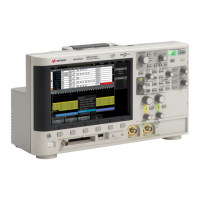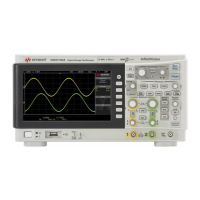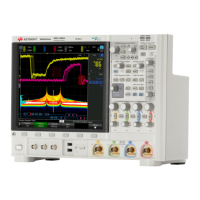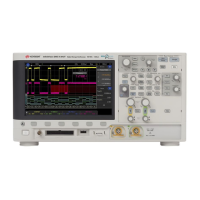:MEASure Commands 24
Keysight InfiniiVision 4000 X-Series Oscilloscopes Programmer's Guide 623
:MEASure:TEDGe
(see page 1610)
Command Syntax
:MEASure:TEDGe [<slope>,]<occurrence>[,<source>]
<slope> ::= {RISing | FALLing | EITHer}
<occurrence> ::= [+ | -]<number>
<number> ::= the edge number in NR1 format
<source> ::= {<digital channels> | CHANnel<n> | FUNCtion<m> | MATH<m>
| WMEMory<r>}
<digital channels> ::= DIGital<d> for the MSO models
<n> ::= 1 to (# of analog channels) in NR1 format
<m> ::= 1 to (# math functions) in NR1 format
<r> ::= 1 to (# ref waveforms) in NR1 format
<d> ::= 0 to (# digital channels - 1) in NR1 format
The :MEASure:TEDGe command installs a screen measurement whose result is the
time of the specified edge transition relative to the trigger edge (time=zero).
The threshold voltage used for this measurement is at the 50% point with a small
amount of hysteresis added. You cannot change the threshold voltage used for this
measurement with the :MEASure:DEFine command.
The optional <slope> parameter specifies whether to look for RISing edges or
FALLing edges. If not otherwise specified, rising edges are assumed.
The <occurrence> parameter specifies the Nth edge to identify.
An <occurrence> value of zero (0) means the edge closest to the timebase
reference; it is equivalent to the Auto selection for the Edge # in the front panel user
interface. The EITHer (either edge) <slope> option can be used only when the
<occurrence> count is zero (0).
Any other <occurrence> value means the Nth edge from the left side of the
display.
The <occurrence> parameter can optionally have a plus sign (+) or a minus sign (-)
to specify a rising or falling slope. Plus or minus signs cannot be used when the
<slope> parameter is used.
If the optional <source> parameter is not specified, the current :MEASure:SOURce
setting is used.
This command is not available if the source is a FFT (Fast Fourier Transform) waveform.
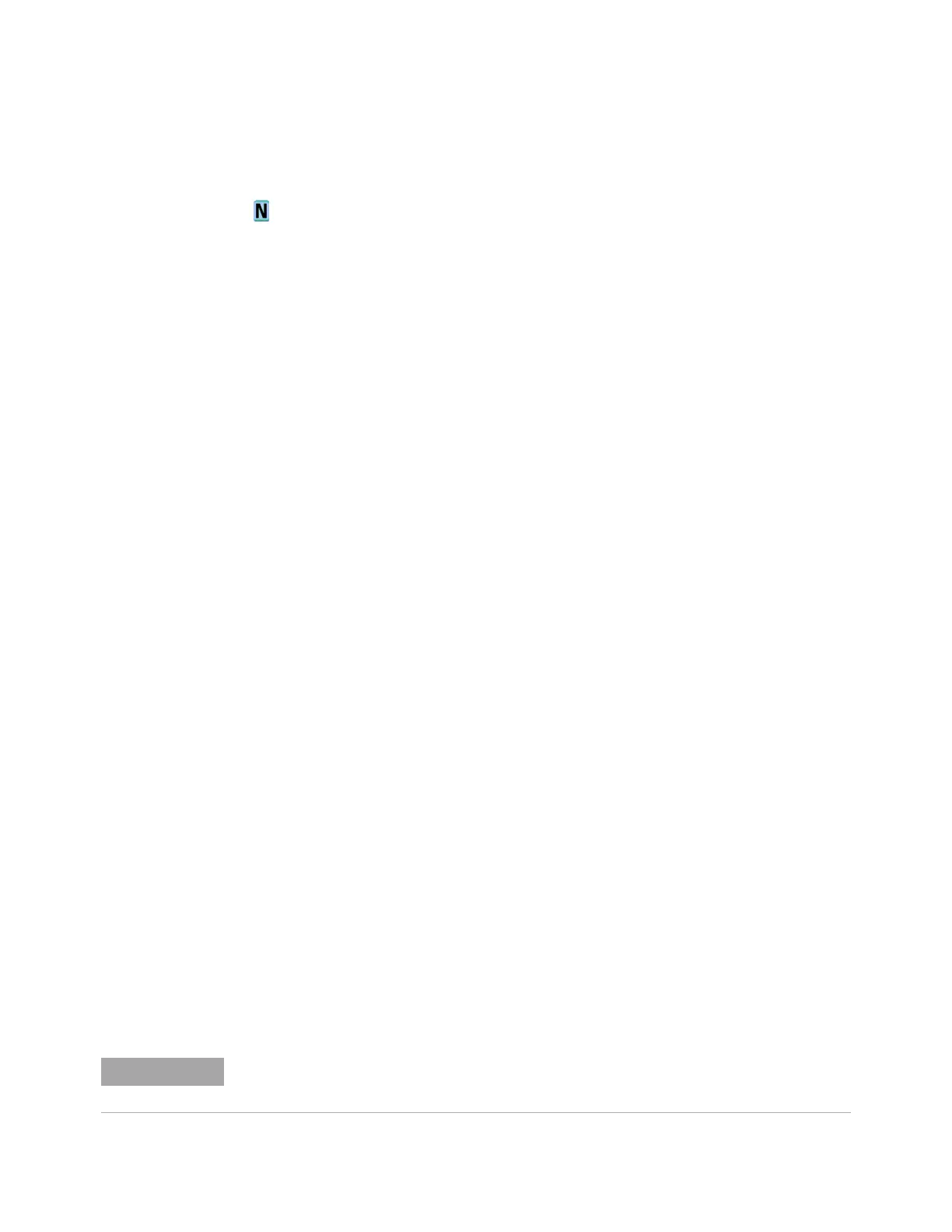